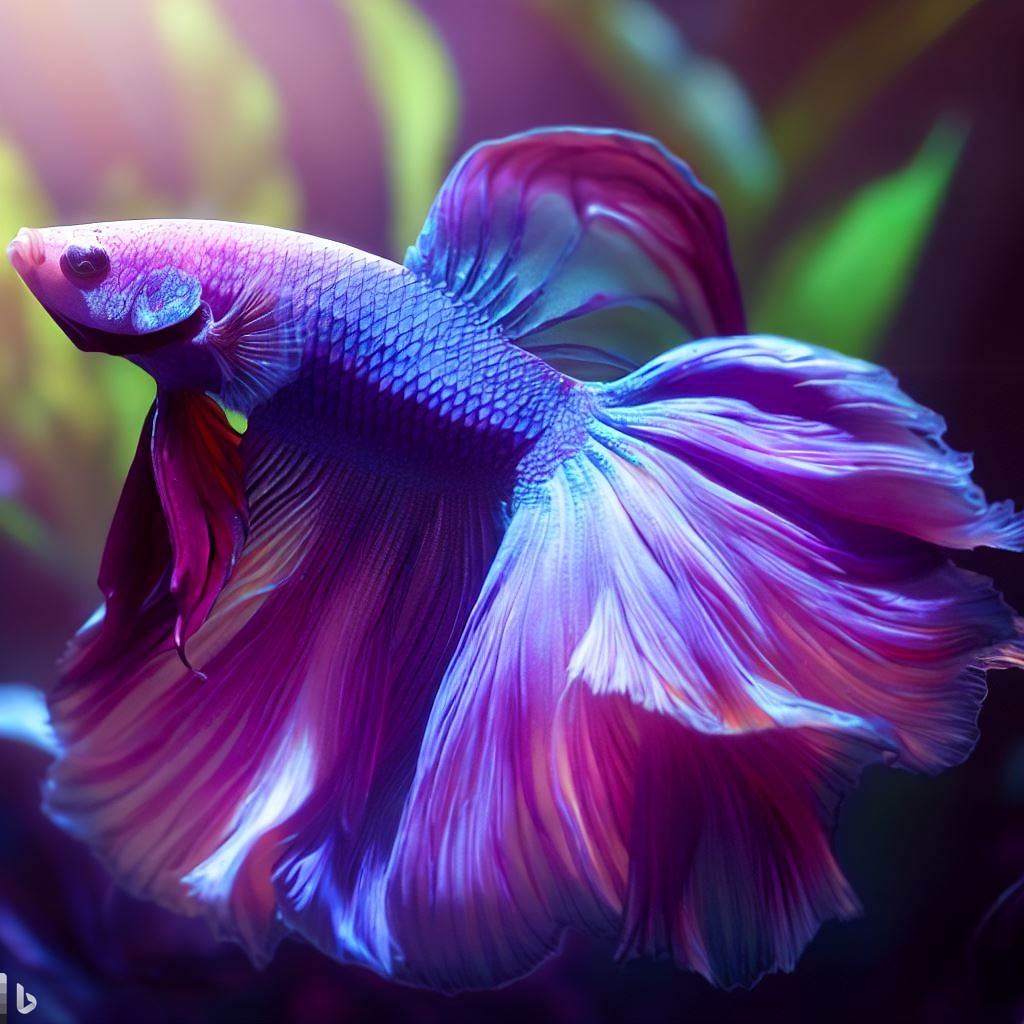Everything About Betta Fish: Comprehending Their Unique Demands, Behavior, and the very best Practices for Ideal Treatment
Recognizing the distinct needs and habits of Betta fish is necessary for any kind of aquarist looking to provide ideal treatment. betta fish. As we discover these components further, the implications for both beginner and knowledgeable fish caretakers come to be significantly noticeable, elevating questions concerning how ideal to suit these impressive fish in our homes.
Betta Fish Overview
Although frequently admired for their vibrant colors and moving fins, Betta fish, medically known as Betta splendens, are intricate animals that call for certain care to flourish. Stemming from Southeast Asia, these freshwater fish are understood for their territorial nature and unique behaviors. Betta fish show sex-related dimorphism, with males displaying much more brilliant colors and longer fins than women.
Their aggressive tendencies, particularly amongst men, demand mindful factor to consider when housing them. Bettas are often maintained in single-specimen containers to avoid territorial conflicts. Nonetheless, they can coexist quietly with certain compatible types in larger area storage tanks, provided the atmosphere satisfies their requirements.

To make sure optimum care, aquarists should comprehend their one-of-a-kind behavior attributes, nutritional needs, and habitat requirements. betta fish. With proper attention, Betta fish can exhibit their dynamic characters and grow in a properly maintained fish tank setup
All-natural Environment and Setting
Betta fish thrive in a varied series of all-natural habitats, mainly found in the shallow waters of Southeast Asia, including rice paddies, swamps, and slow-moving streams. These settings are identified by warm temperature levels, commonly in between 75 ° F and 82 ° F(24 ° C and 28 ° C ), and a pH degree ranging from 6.5 to 7.5, which is ideal for their health and well-being.
In their all-natural surroundings, Betta fish are accustomed to thick plant life, supplying both shelter and breeding premises. The existence of plants such as floating water lilies and thick yards not just provides defense from predators but additionally adds to the oxygenation of the water, which is necessary for their respiratory system requirements. Furthermore, these environments often have locations of still water, permitting Betta fish to display their natural behaviors such as bubble nesting.
Recognizing the natural environment of Betta fish is vital for aquarium fanatics. Duplicating these conditions-- with water temperature, pH equilibrium, and the inclusion of real-time plants-- can substantially boost the total health and long life of these fascinating fish, guaranteeing they flourish in a home aquarium setting.
Social Actions and Interactions
Recognizing the social habits and interactions of Betta fish is crucial for successful fish tank monitoring. Betta fish, or Siamese fighting fish, are recognized for their special behavioral attributes, defined primarily by territoriality and aggressiveness. Males, in specific, display very hostile habits towards each other, causing the infamous online reputation of Betta fish as fighters. In a constrained area, 2 males can participate in fierce battles, frequently leading to injury or fatality.
Conversely, women Bettas show much less hostile actions and can coexist in groups, referred to as sororities, if introduced correctly. Nevertheless, it is essential to check their communications Website very closely, as pecking order and supremacy can cause disputes. Recognizing the characteristics within a Betta neighborhood is crucial; establishing hiding spots and guaranteeing sufficient space can mitigate aggression.
On top of that, Betta fish might likewise show curiosity and social behaviors towards various other species. While they can exist side-by-side with certain non-aggressive container friends, it is crucial to choose suitable species to avoid stress and anxiety and aggression. In general, identifying these social communications is key to fostering a harmonious aquarium environment for Betta fish.
Vital Care Guidelines
Offering proper treatment for Betta fish is important to their wellness and health. Routine water changes-- around 25% weekly-- assistance keep water quality.
Betta fish call for a suitable storage tank dimension; a minimum of 5 gallons is suggested to give sufficient area for swimming and hiding. Consist of designs and plants to create a stimulating setting, however avoid sharp objects that might damage their delicate fins.

Last but not least, ensure the storage tank is outfitted with a filter to keep the water tidy, yet make use of a gentle filter to avoid strong currents that can emphasize the fish. By adhering to these crucial treatment guidelines, proprietors can promote a healthy and balanced and lively Betta fish.
Common Wellness Issues and Solutions
In the care of Betta fish, recognition of typical health my latest blog post and wellness issues is important for keeping their wellness. One prevalent concern is fin rot, typically triggered by inadequate water high quality or microbial infection. Signs include torn or stained fins. To deal with fin rot, enhance water problems and think about using a broad-spectrum antibiotic.
One more typical ailment is ich, a parasitic infection identified by white spots on the fish's body (betta fish). Therapy entails enhancing water temperature level and adding fish tank salt to the container, as this can help get rid of the bloodsucker
Swim bladder condition is additionally frequently observed, causing buoyancy troubles. This condition might emerge from overfeeding or bowel irregularity. A fasting period of 24-48 hours, complied with by a diet regimen of redirected here blanched peas, can provide alleviation.
Last but not least, bettas may experience velour disease, suggested by a gold dust-like look on their skin. Therapy normally requires medication particularly made for external bloodsuckers, along with boosted tank hygiene.
Routine surveillance of water parameters, preserving a tidy setting, and providing a balanced diet plan are crucial precautionary procedures. By resolving these health problems without delay, Betta fish can lead healthier, more dynamic lives.
Final Thought
In recap, effective betta fish care needs an understanding of their distinct needs and habits. Routine monitoring of wellness and water high quality, along with a balanced diet, adds to the durability and vibrancy of betta fish.
Comments on “Betta Fish Tank Arrangement: A Step-by-Step Guide for Beginners”